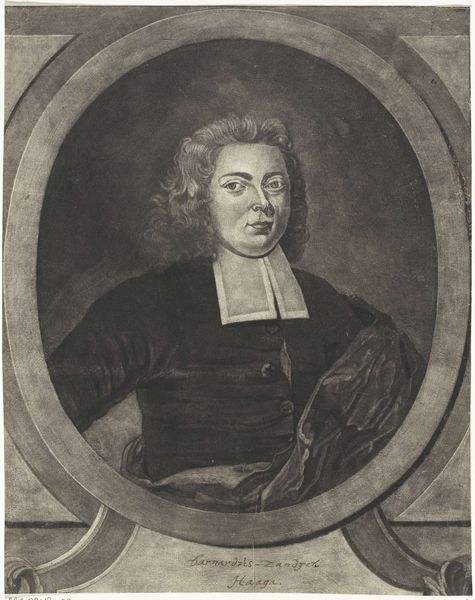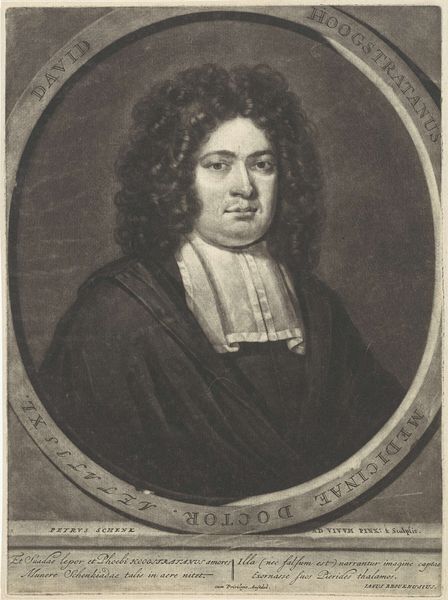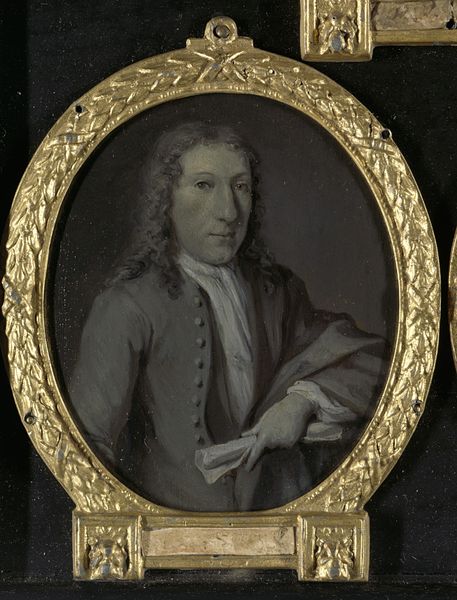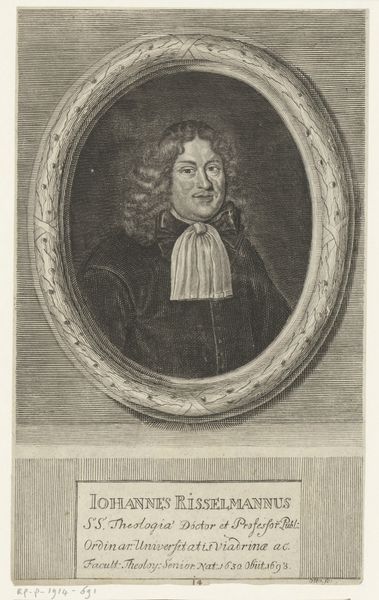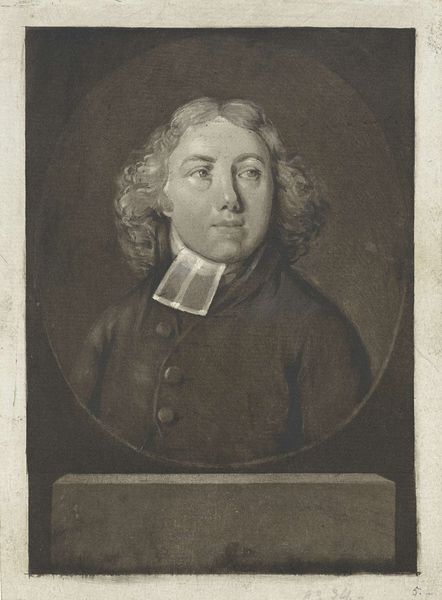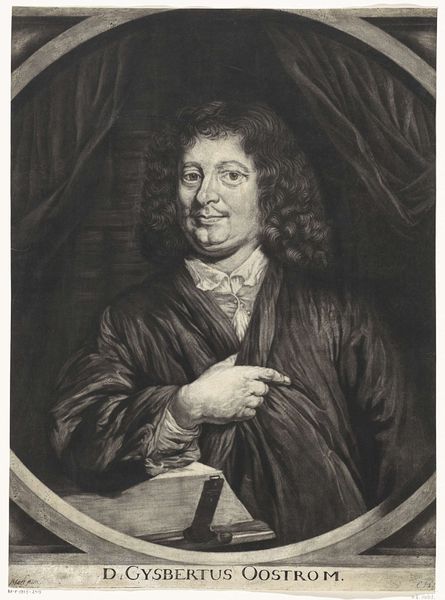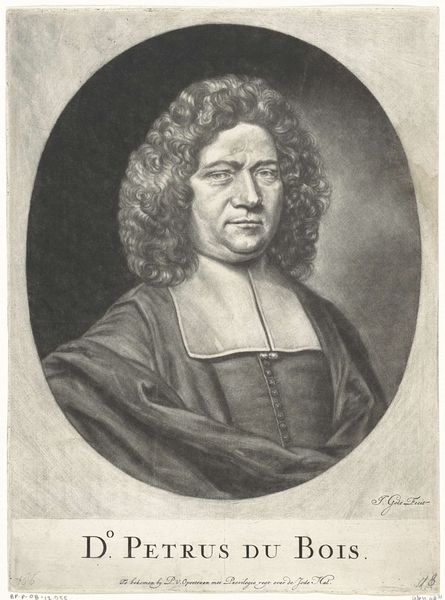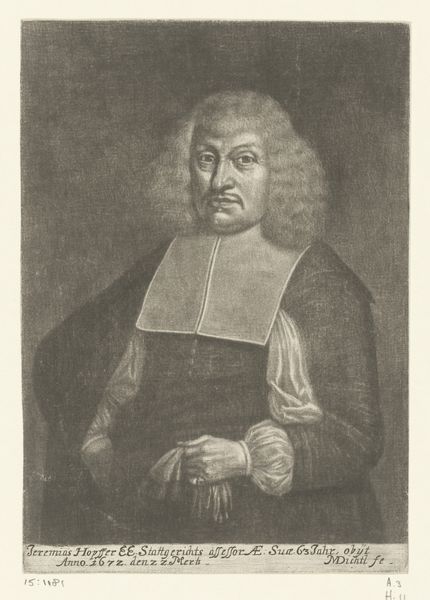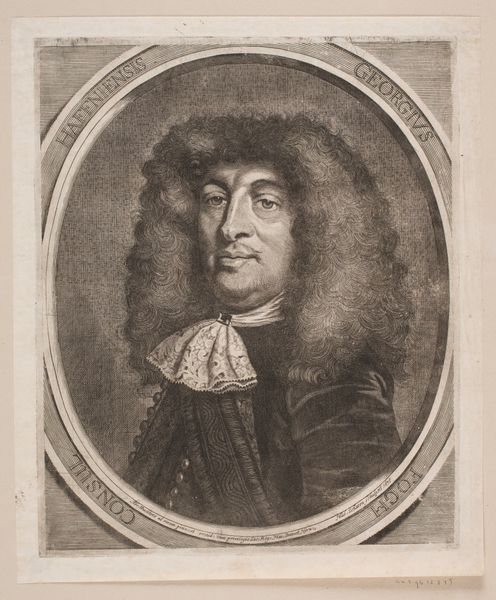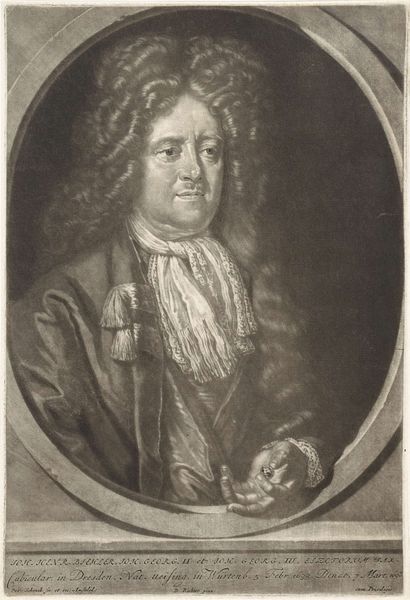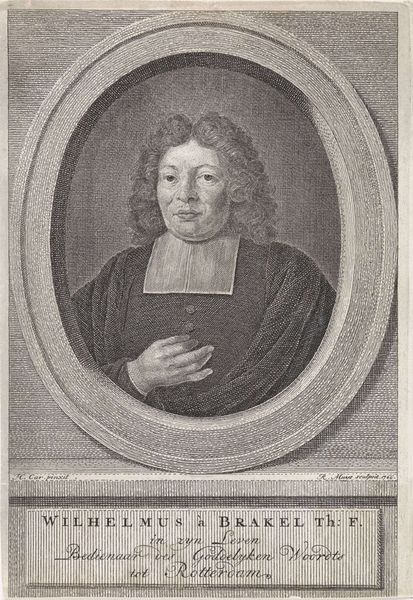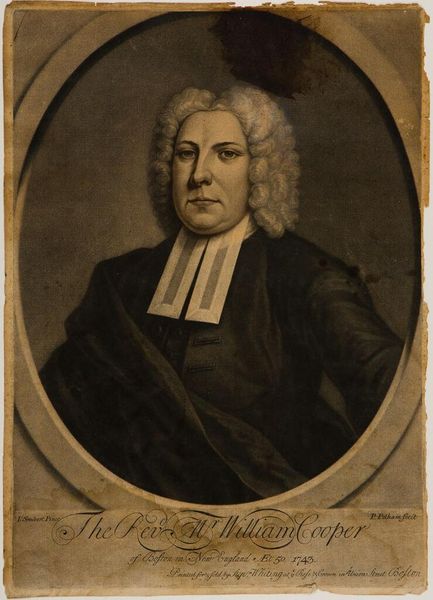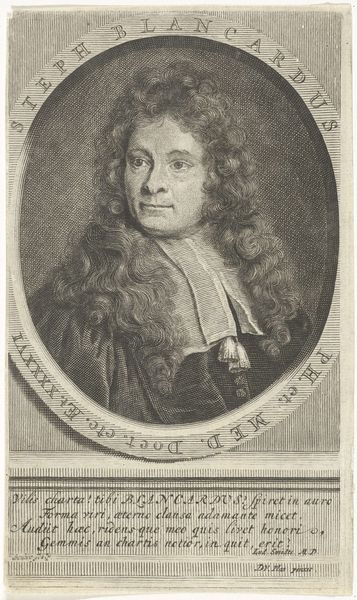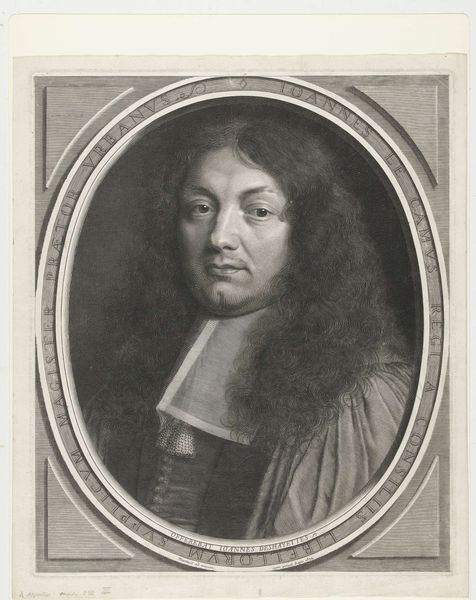
Portrait of Johannes Camphuys, Governor-General of the Dutch East Indies 1750 - 1800
0:00
0:00
Dimensions: height 33 cm, width 25 cm, depth 5.3 cm
Copyright: Rijks Museum: Open Domain
Editor: This is Gerrit van Goor's "Portrait of Johannes Camphuys, Governor-General of the Dutch East Indies," made sometime between 1750 and 1800, using oil paint. It's a striking portrait; quite formal and a little…stiff, would you say? What do you see in this piece? Curator: I see layers of cultural coding, instantly recognizable to its intended audience and fading into obscurity over time. This portrait, in its very composition, speaks volumes about the sitter’s perceived role. The gaze is direct, commanding, yet softened with an implied beneficence appropriate for governance. Do you notice anything about the object he holds? Editor: It looks like a baton or some sort of...instrument? Is it a symbol of his authority? Curator: Precisely! Though seemingly simple, this object and the lace collar mark him out, signaling both authority and affluence. What might be less obvious to a contemporary viewer are the implicit assumptions about the right to power and display that wealth. Editor: So the portrait is about power, but also about justifying that power to those who see it. It's almost like a performance of authority. Curator: Yes, portraits like this served as crucial visual props in constructing and reinforcing colonial authority. They shaped the narrative of the Dutch East India Company and its governors. It is carefully designed to communicate not only individual status, but the legitimacy of an entire system. It’s easy to forget the role imagery plays in creating those shared understandings. Editor: It really is amazing how much unspoken history is embedded within what initially seems like a straightforward painting. Curator: Indeed. Each element carefully considered to construct and convey specific meanings about power and place within a complex social order. Now, it seems like we have unveiled an almost invisible narrative that changes how one reads and comprehends the work!
Comments
No comments
Be the first to comment and join the conversation on the ultimate creative platform.
